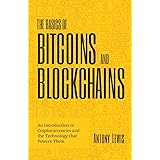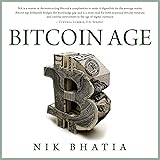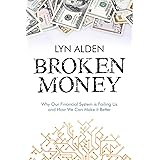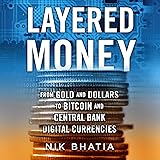As recently highlighted in the accompanying video, the cryptocurrency market has often been a rollercoaster of excitement and uncertainty. Specifically, the early days of September saw a notable positive shift across various digital assets. Bitcoin, the market’s titan, registered an increase of 2.6%, while Ethereum, a leading smart contract platform, followed suit with a 2.1% climb. However, capturing significant attention was XRP, which experienced an impressive 3.1% jump, indicating a prevailing bullish sentiment among investors. This article delves deeper into why XRP, often a subject of intense debate and speculation, is being considered as a potential key investment for 2025, exploring its unique position amid regulatory battles, market dynamics, and future projections.
XRP’s Recent Market Performance: A Snapshot
The performance of XRP, particularly as reported in an Indiatimes article discussed in the video, has been a focal point for many. While exact trading ranges can fluctuate significantly, XRP was noted at one point to be trading within an approximate range of $2.75 to $3.05. This was in stark contrast to other digital assets mentioned, such as Stellar, which held steady at $0.36, and Remittix, trading at a lower $0.103. Despite the seemingly modest price point of Remittix, it was indicated that this asset garnered significant buzz due to attractive features like low transaction fees, extensive FX support, and the launch of a mobile wallet, which were actively drawing investor interest. This comparison serves to underscore the competitive landscape in which XRP operates, where utility and investor-friendly features play a crucial role.
The Game-Changer: SEC Lawsuit Settlement
Perhaps the most pivotal development affecting XRP’s trajectory was the reported settlement of the long-standing legal battle between Ripple and the U.S. Securities and Exchange Commission (SEC). As was highlighted, a Reuters report in August 2025 brought news of this resolution. It was understood that Ripple was required to pay a fine of $125 million, and certain limitations were imposed on its institutional XRP sales. However, the most significant aspect of this settlement was the declaration that the public trading of XRP would “not be a security.”
“Not a Security” Declaration: A New Era for XRP
This legal clarity is frequently emphasized as a monumental victory for Ripple and the broader crypto market. The declaration effectively removed a major regulatory overhang that had plagued XRP for years, hindering its adoption and price growth. Consequently, both crypto exchanges and individual investors now possess a clearer understanding of XRP’s legal status, facilitating its trading and integration into mainstream financial systems. It is widely believed that this regulatory resolution has significantly bolstered the prospects for future developments, including the crucial approval of exchange-traded funds (ETFs) for XRP.
The ETF Effect: Institutional Inflow Potential
The anticipation surrounding ETF approval is often cited as one of the most substantial bullish catalysts for XRP. Following the regulatory clarity provided by the SEC settlement, numerous firms in the United States were reported to have applied for spot XRP ETFs. This move is seen as a strong indicator of institutional interest and confidence in the digital asset.
Understanding Spot XRP ETFs
A spot ETF for XRP would allow traditional investors to gain exposure to the cryptocurrency’s price movements without directly owning or managing the underlying asset. This mechanism simplifies investment, reduces security risks associated with self-custody, and makes XRP accessible to a much broader pool of institutional and retail investors who prefer regulated investment vehicles. It is generally understood that ETF approvals could legitimize XRP further in the eyes of traditional finance, attracting capital that has historically been hesitant to enter the crypto space directly.
The Projected Impact
Should these ETF applications receive approval, analysts have projected a substantial influx of institutional capital into XRP. Estimates suggest that between four to eight billion dollars could be directed into XRP through these investment vehicles. This significant capital injection would inevitably lead to a dramatic increase in demand, which, under normal market conditions, is expected to drive the price of XRP considerably higher. The direct consequence would be a potential “rocket” effect on XRP’s market valuation, making it a compelling asset for those tracking large institutional movements.
Real-World Utility: Beyond Speculation
Beyond the speculative nature of crypto markets, XRP’s value proposition is significantly strengthened by its established real-world utility. This aspect often differentiates it from purely speculative meme coins or projects without tangible applications.
RippleNet and On-Demand Liquidity (ODL)
RippleNet, Ripple’s global payment network, along with its On-Demand Liquidity (ODL) service, is already being utilized by various banks and financial institutions. The core function of ODL is to facilitate lightning-fast and cost-effective cross-border payments. Traditionally, international money transfers can take several days to settle, incurring high fees and requiring pre-funded accounts in various currencies. Through ODL, XRP acts as a bridge currency, enabling these payments to be settled in mere seconds. This efficiency and speed represent a significant improvement over legacy financial systems. The adoption by established institutions highlights a practical, impactful use case for XRP, offering a concrete utility that underpins its long-term potential.
Expert Outlook: AI Forecasts and Analyst Predictions
The future price trajectory of XRP is a hot topic, with various experts and artificial intelligence models weighing in. According to insights from Google Gemini AI, the outlook for XRP in 2025 is broadly bullish. This AI-driven forecast suggests a positive trend, aligning with the sentiments of many human analysts.
Furthermore, several financial analysts have drawn parallels between the current market sentiment and XRP’s potential to previous bull runs, specifically those observed in 2017 and 2021. Such comparisons are often made when certain market conditions, regulatory developments, or adoption rates mirror past cycles that led to significant price appreciation. The belief is that history might, in some respects, repeat itself, leading to another substantial surge in XRP’s value. These expert opinions contribute to the overall optimistic narrative surrounding XRP as a compelling investment opportunity.
Navigating the Risks: What Investors Need to Consider
Despite the prevailing optimism and positive developments, a balanced investment perspective necessitates a thorough understanding of the inherent risks associated with XRP investment. No asset is without its challenges, and XRP is no exception.
Persistent Regulatory Hurdles
While the primary SEC lawsuit against Ripple may have been settled, it is important to note that certain appeals or other regulatory actions could still be pending or initiated. A resurgence of aggressive regulatory scrutiny or unforeseen legal challenges could potentially delay critical approvals, such as those for ETFs. Regulatory uncertainty, even in a diminished form, has the capacity to create market jitters and influence investor confidence negatively.
Extreme Volatility: A Double-Edged Sword
XRP, like many cryptocurrencies, is characterized by extreme price volatility. Instances where the asset’s value can surge by 30% in a single month, only to plummet by a similar percentage the following month, are not uncommon. This high level of fluctuation means that XRP is generally considered suitable only for investors with a strong risk appetite and the capacity to withstand significant market swings. For those seeking stable, predictable growth, this level of volatility can be a substantial deterrent.
Limited Ecosystem and Growing Competition
Compared to broader blockchain ecosystems like Ethereum, Solana, or Polygon, which boast extensive networks of decentralized finance (DeFi) applications, non-fungible tokens (NFTs), and various decentralized applications (DApps), XRP’s ecosystem is often perceived as more limited. Its primary use case is largely concentrated in cross-border payments. Should the ecosystem fail to expand into other areas of blockchain innovation, its growth potential might be constrained.
Furthermore, the competitive landscape is intensifying. Ripple faces challenges from emerging central bank digital currencies (CBDCs) and innovative FinTech models. If global banks increasingly adopt CBDCs for their interbank settlements, the demand for XRP’s ODL services could potentially be reduced, thereby impacting its utility and market demand.
Divergent Price Predictions: A Mixed Bag
Price predictions for XRP vary significantly among analysts, reflecting the uncertainty inherent in the crypto market. While some optimistic forecasts envision XRP reaching figures between $5 and $10, more conservative estimates place its potential range at $1.5 to $2.5. This wide disparity in projections indicates that a universally bullish sentiment is not yet established, and investors are advised to consider a broad spectrum of possible outcomes rather than relying on a single, high-end prediction.
The Indian Investor Perspective on XRP
For investors situated in India, XRP remains an accessible digital asset, readily tradable on popular domestic platforms such as CoinDCX and WazirX. These platforms provide a straightforward gateway for Indian residents to engage with the crypto market.
Trading Platforms and Tax Implications
However, a crucial factor that Indian investors must meticulously consider is the tax regime applicable to cryptocurrency profits. India imposes a flat 30% tax on gains derived from crypto assets. This means that if a profit of, for instance, ₹1 lakh (approximately $1,200 USD) is realized from an XRP investment, a significant ₹30,000 (approximately $360 USD) would be directed towards taxes. Consequently, it is imperative for investors to calculate their potential after-tax returns accurately before making investment decisions, ensuring that the net profit aligns with their financial objectives.
A Balanced View: Weighing the Pros and Cons of XRP Investment
When considering XRP as an investment for 2025, a balanced perspective is essential. Both the potential upsides and the inherent downsides must be thoroughly evaluated to make an informed decision.
Key Advantages for XRP Holders
- ETF Approval Potential: The prospect of spot XRP ETF approvals is widely seen as a significant catalyst, potentially unlocking substantial institutional investment and driving considerable upside.
- Real-World Utility: Ripple’s established banking tie-ups and the growing adoption of its On-Demand Liquidity (ODL) services demonstrate a strong, practical use case for XRP in facilitating efficient cross-border payments.
- Positive Market Sentiment: Particularly following the clarification provided by the SEC case settlement, market sentiment surrounding XRP has generally turned positive, fostering optimism among investors.
Potential Drawbacks and Challenges
- Lingering Regulatory Uncertainty: While the major lawsuit has concluded, some regulatory appeals or future challenges could still present hurdles, potentially delaying growth catalysts.
- High Volatility: XRP’s price is subject to extreme fluctuations, meaning investors must be prepared for significant gains as well as substantial losses.
- Limited Ecosystem: Compared to more diversified blockchain platforms, XRP’s ecosystem is primarily focused on payments, which could limit its broader growth if not expanded.
- Intensifying Competition: The rise of CBDCs and other FinTech innovations poses a competitive threat to Ripple’s market position, potentially impacting XRP demand.
Strategic Investment Approaches for XRP
For those contemplating an XRP investment, several strategic approaches can be employed to manage risk and optimize potential returns. It is often emphasized that these strategies are critical, especially given the volatile nature of cryptocurrency markets.
Assessing Your Risk Capacity
The first step in any investment journey, particularly with a high-risk asset like XRP, involves a frank assessment of one’s personal risk tolerance. Investors are generally advised to only invest capital they are prepared to lose. This principle is especially pertinent for assets that exhibit rapid price movements. By understanding and adhering to one’s risk capacity, financial stability can be maintained even if market outcomes are unfavorable.
The Power of Dollar-Cost Averaging (DCA)
Instead of making a single, large lump-sum investment, a more prudent approach often suggested is dollar-cost averaging (DCA). This strategy involves investing a fixed amount of money at regular intervals, regardless of XRP’s price. For example, one might decide to invest $100 every month. When the price of XRP is low, more tokens are purchased; when it is high, fewer are acquired. Over time, this method helps to average out the purchase price, reducing the impact of volatility and mitigating the risk of investing a large sum at an unfavorable market peak.
Importance of Portfolio Diversification
Relying solely on XRP for all investment returns can expose an investor to undue risk. Therefore, creating a diversified portfolio is a cornerstone of sound investment practice. This involves spreading investments across various asset classes or different cryptocurrencies. For instance, alongside XRP, an investor might consider more established coins like Ethereum, or those with strong ecosystems such as Solana or Cardano, which offer diversified growth potential and different risk profiles. This approach helps to cushion the portfolio against potential downturns in any single asset.
Ultimately, the decision to invest in XRP is a personal one, weighing the exhilarating prospects of ETF approvals and real-world utility against the inherent risks of volatility, regulatory unpredictability, and ecosystem limitations. Whether XRP will soar to $10 or remain anchored closer to the $2 mark is a question that remains debated, underscoring the dynamic nature of this particular crypto investment.







